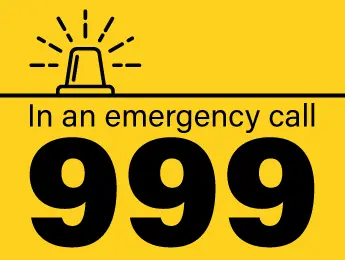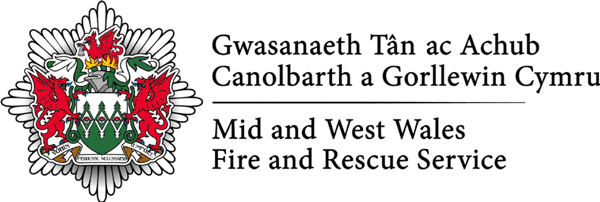Accessibility statement for the Mid and West Wales Fire and Rescue Service website.
This website is run by Mid and West Wales Fire and Rescue Service.
We want as many people as possible to be able to use this website and have therefore embedded assistive technology (ReachDesk) to improve its accessibility.
This means that you should be able to:
- change colours, contrast levels and fonts.
- zoom in without the text spilling off the screen.
- navigate most of the website using just a keyboard.
- navigate most of the website using speech recognition software.
- use most of the website using a screen reader.
We’ve also made the website text as simple as possible to understand.
How accessible is this website?
We know some parts of this website are not fully accessible:
- some poor colour contrast between the background and foreground exists
- some pages and attachments are not clearly written
- some heading elements are not consistent
- some page titles are not unique
- some form labels are not unique
- some images do not have any appropriate alternative text
- some link text does not describe the purpose of the link
- most older PDF documents are not fully accessible to screen reader software
- video streams and meeting recordings, such as our Fire Authority videos, do not have captions
Feedback and contact information
If you need information on this website in a different format like accessible PDF, large print, easy read, audio recording or braille, please email us at: mail@mawwfire.gov.uk.
We’ll consider your request and get back to you in 10 working days.
Reporting accessibility problems with this website
We’re always looking to improve the accessibility of this website. If you find any problems not listed on this page or think we’re not meeting accessibility requirements, please email us at: mail@mawwfire.gov.uk
It’s possible that you will find an occasional PDF that has not yet been fixed. If that’s the case, please let us know so we can take action.
Enforcement procedure
The Equality and Human Rights Commission (EHRC) is responsible for enforcing the Public Sector Bodies (Websites and Mobile Applications) (No. 2) Accessibility Regulations 2018 (the ‘accessibility regulations’). If you’re not happy with how we respond to your complaint, contact the Equality Advisory and Support Service (EASS).
Contacting us by phone or visiting us in person
We provide a text relay service for people who are D/deaf, hearing impaired or have a speech impediment.
Our offices have audio induction loops, or if you contact us before your visit, we can arrange a British Sign Language (BSL) interpreter.
Technical information about this website’s accessibility
Mid and West Wales Fire and Rescue Service is committed to making its website accessible, in accordance with the Public Sector Bodies (Websites and Mobile Applications) (No. 2) Accessibility Regulations 2018.
Compliance status
This website is partially compliant with the Web Content Accessibility Guidelines version 2.1 AA standard, due to the non-compliances listed below.
Non-accessible content
Non-compliance with the accessibility regulations
- There is non text content across the site that may have empty, missing of incorrect alternative text. There are also instances where images may be marked as decorative when they were not, or not marked as decorative when it would make more sense to do so. These issues fail WCAG 1.1.1 Non-text content.
- There are some videos on our site where captions are automated and not entirely accurate in all places. This fails WCAG 1.2.2 Captions (prerecorded).
- There are some videos on our site which do not have an audio description for the visuals they contain. This fails WCAG 1.2.5 Audio Description (prerecorded).
- There are instances across the website where there are illogical heading structures and text that visually appears to be a heading and acts like one but is not coded as such. There are also forms on the website where radio buttons are not programmatically associated with the overall question, only labelled by the individual option label itself. It has also been identified that there are PDFs which has not been tagged to programmatically present the same structural information as provided visually. These issues fail WCAG 2.1 A 1.3.1 Info and relationships.
- There are forms used on the site which gather personal information. For these form inputs, the purpose and specific type of data required are not programmatically available in the code. Additionally, no autocomplete attributes were found. These fail WCAG 1.3.5 Identify input purpose.
- There are instances where colour alone is used to distinguish links across the website. Similarly, there are links that exist which may not have sufficient contrast against the standard text to be distinguishable. There is also graphical information on the website which relies on the interpretation of colour alone to understand the information being presented. These fails WCAG 2.1 1.4.1 Use of Colour and WCAG 2.1 1.4.3 Contrast (Minimum).
- There are images across the site which contain text, and in some instances the background colour is often not consistent meaning there can be parts of the text that do not have sufficient contrast against the background. In some instances, Asterisks, when used to mark mandatory fields in a form, do not have sufficient colour contrast against the background colour. These fail WCAG 2.1 1.4.3 Contrast (Minimum).
- When the website is zoomed there may be instances where some of the page components cause other components to be unreachable. This fails WCAG 1.4.4 Resize text.
- There are some images of text being used across the website, however, they cannot be changed by users to meet their needs, for example increasing font size. Also, There are instances where statistical data is presented visually but the text is primarily the information being conveyed. These fail WCAG 1.4.5 Images of text.
- There are instances where when a browser is zoomed to 400% text overlapped which can make it difficult to read, or page elements or text gets partially cut off. This fails WCAG 1.4.10 Reflow.
- There are some issues with the border colour of text input fields not having enough contrast against the background which may make it difficult for some users to understand where to input information. There are also instances where non-textual content has insufficient colour contrast against the background. These fail WCAG 1.4.11 non-text contrast.
- Across the site, text resizing can sometimes cause text to be pushed off of its usual background resulting in poor colour contrast and making the text harder to read. In this vein, there may be times when text resizing causes text to be pushed further down behind other content meaning it could no longer be read. These fail WCAG 1.4.12 Text Spacing.
- There are instances where content that was revealed on hover could not be dismissed without changing the hover or focus and the content itself cannot be hovered over without it disappearing. This fails WCAG 1.4.13 Content on hover or focus.
- There are cases where action buttons located across the website are not actionable with a keyboard. Also, when a user’s browser is zoomed, menus may collapse into hamburger menus to help with presenting the content on a smaller screen, however, not all additional components are functional with a keyboard. These fail WCAG 2.1.1 Keyboard.
- There are instances where moving, flashing or scrolling information that starts automatically and lasts more than 5 seconds, does not have a way to pause, stop or hide it. This fails WCAG 2.2.2 Pause, stop, hide.
- Some pages across the site do not have titles that describe the topic of the purpose of the page, or that are unique. This fails WCAG 2.4.2 Page titled.
- When hidden content is revealed, focus does not always move to the content and users are unable to tab directly to that content. Focus orders are not always logical across the site either. These fail WCAG 2.4.3 Focus order.
- There are a couple of instances where the purpose of a link is unclear from the link text alone or from its immediate context. This fails WCAG 2.4.4 Link purpose (in context).
- Not all interactive elements have a visible indicator when focused using a keyboard. This fails WCAG 2.4.7 Focus Visible
- There are instances where an accessible name is missing some of the information that is available in the visible text, or the accessible name of elements differed from the visible text. These fail WCAG 2.5.3 Label in name.
- There are cases where Welsh language text is being used without the language being programmatically identified. This fails WCAG 3.1.2 Language of parts.
- There are places across the website where duplicate IDs are present and ID values should be unique. There are also cases where elements have been nested inside of others against the HTML specification resulting in invalid HTML. These fail WCAG 4.1.1 Parsing.
- There are known instances where links and inputs do not have an accessible name. Dynamic content is not always hidden for all users and occasionally does not have the right ‘state’ programmatically. Across the site, there are where invisible links are present but are not hidden for keyboard or assistive technology users and did not have proper accessible names. Finally, there may be iFrames being used across the site which do not have accessible names. These fail WCAG 4.1.2 Name, role, value.
- There are cases where error messages appear on forms and users of assistive technology are not notified of these messages. This fails WCAG 4.1.3 Status messages.
As a result of the accessibility issues identified and the impending cessation of support for the Content Management System, we utilise to run this website, the Service has commissioned the production of a new website the work for which will commence in early 2023. It is anticipated that the new website will be developed and live by December 31, 2023, however, until such time that the Service engages external contractors, we cannot guarantee this.
In the meantime, we are currently reviewing this website in its entirety, in order to fix as many of the accessibility issues we can whilst a new website is being developed.
Content that’s not within the scope of the accessibility regulations
PDFs and other documents
Some of our PDFs and Word documents are essential to providing our services. For example, we have PDFs with information on how users can access our services, and forms published as Word documents. By December 2023, we plan to either fix these or replace them with accessible HTML pages.
The accessibility regulations do not require us to fix PDFs or other documents published before 23 September 2018 if they’re not essential to providing our services.
Any new PDFs or Word documents we publish will meet accessibility standards.
What are we doing to improve accessibility?
As a result of the accessibility issues identified and the impending cessation of support for the Content Management System, we utilise to run this website, the Service has commissioned the production of a new website the work for which will commence in early 2023. It is anticipated that the new website will be developed and live by December 31, 2023, however, until such time that the Service engages external contractors, we cannot guarantee this.
In order to continue to improve our compliance with the accessibility regulations on this website in the meantime, we are now using several online tools to monitor our performance, including:
Accessibility Checker
Google Lighthouse
We are actively considering publishing future documents in HTML format rather than in PDF, where possible.
We aim to fix as many of the identified accessibility issues as we can whilst work continues to develop our new Service website.
Preparation of this Accessibility Statement
This statement was prepared on 7 December 2022 and was last reviewed on 7 December 2022.
This website was last tested by the Accessibility Monitoring Team at the Government Digital Service between 16 September 2022 and 2 November 2022.


